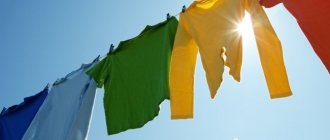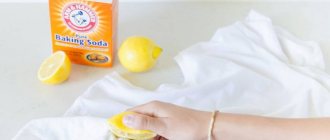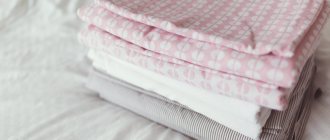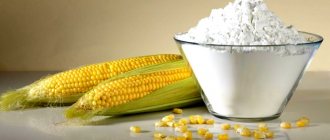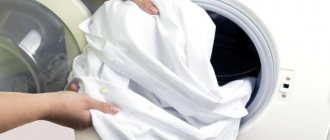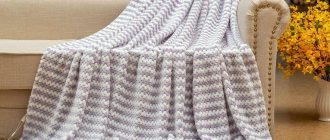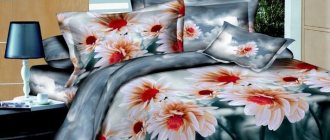Washing machines have greatly simplified our lives: all we now need to do to get things clean is select the mode/temperature, put the laundry in the drum, and take it out. But no matter how good the technology is, it cannot completely remove dirt; things turn yellow, gray, and fade. Many years ago, our great-grandmothers boiled laundry to restore its whiteness, get rid of stains, and disinfect it. This simple, economical and effective method is still relevant today. Let's talk about the process in more detail.
When is boiling necessary?
There are several cases when it is necessary to boil laundry:
- Disinfection. Relevant for clothes and linen of small children, sick people, and allergy sufferers. High temperature kills bacteria, viruses, parasites, fungi, and dust mites. Therefore, it is also recommended to boil clothes and textiles after hospitals, baths, and swimming pools.
- Allergy to powders. For allergy sufferers and small children, boiling is an indispensable way to clean clothes, as it can be done with soda and laundry soap, without the use of aggressive chemicals.
- Removing stains. Some types of stains are so difficult to remove that housewives lose hope when they write off their laundry. However, the product can be saved by boiling. Fat, blood, and food stains are removed especially well in this way.
- The return of whiteness. You can boil laundry for bleaching a little longer than when removing stains. It is unlikely that it will be possible to restore the brightness of the pattern in this way, but the white linen will become as good as new.
Attention! Colored items can fade greatly at high temperatures. Synthetic and delicate fabrics (for example, polyester, wool, satin) also do not tolerate boiling water.
Citrus zest
Other parts of citrus fruits are also useful in bleaching. Both lemon juice and zest have the necessary properties. Orange and grapefruit will also come in handy.
The method is a little longer than with juice, but it also works:
- Remove the skin from the fruit.
- Boil it in boiling water for 20 minutes.
- Cool slightly and add a couple of tablespoons of hydrogen peroxide.
- Soak your laundry in the broth. The result will be noticeable after 3 hours. If the fabric allows it, then use a hot solution; if not, wait until it cools down to 40 degrees.
Milk
Simple products work wonders: for example, milk easily removes grayness and even blue ink. Just soak your laundry in it and wait. To speed up the results, periodically wipe the stains and replace the milk with fresh milk.
White vinegar
Housewives use vinegar to rinse clothes and preserve their color. The product can restore the whiteness of panties in several applications:
- Mix a glass of vinegar and 1 liter of water.
- Soak the laundry in the solution for several hours. Soaking overnight is allowed.
- After soaking, wash the product as usual.
Boric acid
If you have boric acid in your household, it is also suitable for delicate whitening of underwear. Use the substance in powder form:
- For 3 liters of water - 50 g of boric acid.
- Soak for at least 1 hour.
- Wash as usual.
What will you need?
Of course, if your washing machine has “Boiling” among the modes, then you don’t need to think about tools.
But in order to boil the laundry manually, you will need:
- Large capacity. This could be a pan, bucket or basin. The container must hold at least 8-10 liters of water. Its volume depends on the size and number of things that need to be boiled. If you choose a basin, it is worth remembering the temperature limits that it can withstand. There should be no rust on the pan or bucket; it is better if the container is enameled. There are also boils that are designed specifically for boiling.
- Tongs or a long stick. They must be wooden, and in no case iron, otherwise traces of rust may remain on the linen. With the help of tongs it is convenient to remove clothes and stir them during the process for even cooking.
- Detergents. There are a huge variety of them; you can use both professional and folk methods. The first includes all kinds of bleaches and powders, the second includes acids, lemon juice, baking soda, peroxide, and laundry soap.
For baby clothes
Boiling baby clothes is necessary in order to reduce the likelihood of skin diseases, destroy harmful microorganisms and get rid of odors.
Use products that are odorless and mild. This is baby soap or gel, soda, salt.
To avoid damaging the fabrics of children's clothing, rub them with soap in advance and then place them in the pan.
Procedure
Boiling laundry in a saucepan is not at all difficult, the main thing is to know the procedure:
- Wash heavily soiled items. This way the effect of boiling will be more noticeable.
- Sort things by color and material before boiling them. Children's clothing should be treated separately.
- If there are metal objects on your clothes: buttons, jewelry, you should tear them off before the procedure and then sew them back.
- Make sure that all items are allowed to boil, as indicated by the washing temperature above 90°C.
- Afterwards you need to prepare a container that will be used for cooking. It is important to make sure that it is free of rust and other contaminants.
- Pour water into the selected container at the rate of 10 liters per 1 kg of contaminated items.
- Heat the water, but do not bring it to 100°C. Add detergent to the warm liquid.
- Immerse things in the solution and compact them.
- Boil the laundry for some time over low or medium heat. The duration of the procedure depends on the type of fabric and its color.
- After the time has passed, you need to cool the laundry a little without removing it from the water, then carefully remove it with tongs and wait until it becomes slightly warm.
- Rinse in cool water or put in the machine on the “Rinse and Spin” mode.
So how long does it take to boil laundry properly? There is an opinion: the longer things are in hot water, the better they are cleaned. However, it is not. Moreover, even dense fabric can be deformed if it is cooked for longer than the specified time. The duration of boiling is influenced by several factors:
- Linen color. If it is necessary to disinfect and bleach white fabric, it should be boiled for about an hour. But colored and patterned items are less resistant to temperature increases; their boiling time is 20-30 minutes.
- Fabric type. Delicate materials should not be boiled, but if this procedure is necessary, the procedure will last about 20 minutes. Synthetics and wool especially do not like hot water, so you cannot boil them; it is better to turn to other methods of removing stains: bleaches and stain removers.
- Number of boils. If the fabric has already undergone several similar procedures, you can safely leave it in the pan for one and a half to two hours. The same applies to natural dense light-colored fabrics (for example, cotton). It takes 3-4 hours to disinfect the material.
Some nuances:
- The container should be only 2/3 filled with water.
- Things must be completely covered with water.
- Stir the laundry periodically with tongs to prevent it from sticking to the bottom.
- Do not move far from the stove during the boiling process.
- Open the windows to avoid inhaling fumes.
- If the water becomes cloudy, it’s time to stop the procedure.
The need for
When laundry is boiled, it is disinfected. And also with the help of this event you can give a more aesthetic look to children's undershirts and provide a snow-white look for medical gowns and bed linen. Boiling is often used in relation to:
- men's shirts;
- kitchen towels;
- tablecloths and other kitchen utensils.
Any item made from cotton and linen can be subjected to this procedure. Sometimes you can hear the opinion that the use of boiling as a method of disinfection is an outdated method. Many argue that in our time there are many modern methods that can effectively combat germs and bacteria that have gotten on clothes. In particular, the most effective methods are:
- washing in an automatic machine at high temperatures;
- processing using a steamer;
- use of detergents with antibacterial effect;
- use of household bactericidal lamps.
Of course, these methods are effective, but in some cases the boiling procedure is more preferable. There are often situations in life when you simply cannot do without it:
- removing stubborn stains from kitchen utensils and regular clothing. We are talking about eliminating food stains, blood, baby feces and machine oil stains;
- disinfection of personal belongings of people suffering from various diseases;
- reducing the risk of recurrence of allergic reactions. For example, it is best to boil an infant’s underwear and it is more correct to do this in a soda solution.
There is another reason to use not modern means, but a proven method from the Soviet past. If you boil white linen and other things correctly, you can easily return freshness to items that have lost their attractiveness and make them crystal clear. By treating linen with boiling water, the effect of newness appears even in heavily washed items.
Using the washing machine
Many modern models of washing machines have a boiling function - the water in them can heat up to 95°C. This greatly simplifies the digestion process, since all the main work will be done by the equipment.
To boil laundry in an automatic machine, you must:
- Place items that need to be washed or disinfected in the drum.
- detergent or use one of the traditional methods.
- Set the mode and temperature to 95°C.
Boiling recipes depending on the type and color of fabric
You should select a solution for boiling according to the type of fabric and its color. It is also worth highlighting separately such groups of things as children's and workers'; the process of digesting them is also different.
White fabrics
It is especially difficult to remove stains from light-colored fabrics, and they appear more often. Boiling white linen is also necessary for bleaching to remove grayness and yellowness.
There are several ways to do this:
- Mix washing powder and bleach in equal proportions and boil for 50-60 minutes.
- 2-3 tablets of hydroperite, thrown into water, will help boil the laundry in an hour and a half.
- 2 tbsp. salt and 300-400 ml of bleach should be added to the boiling container and boiled for 30-40 minutes.
- 7 tbsp. l. boric acid solution will remove difficult stains and restore the original color. Boil for about 30 minutes.
- Dissolve 400 g of soda ash and 0.5 liters of bleach in 10 liters of water and boil for an hour.
Baby clothes
Washing children's clothes is different from the usual process, as babies are more susceptible to viruses, infections and allergies. Therefore, such things need to be boiled separately from adults; you cannot use aggressive products with flavors and dyes, or household chemicals. Laundry or baby soap and gels for washing children's clothes will do the job well and will not harm the baby. You can use a solution of 100 g of grated soap and 70 g of soda in water. It is necessary to boil the laundry for an hour, to completely destroy bacteria - 3-4 hours.
Work clothes
Work clothes are quite difficult to wash either in a washing machine or by hand. Fuel oil, greasy stains, and industrial by-products do not respond well to detergents; boiling will help to deal with them. To achieve a good result, you need to add 300 g of soda ash and 1-2 pieces of laundry soap, previously rubbed into shavings, to the water.
To remove oil stains better, use 1-2 tbsp. l. kerosene. Good stain removing powders will also be effective.
Colored fabrics
To boil colored fabrics, you can use any means that do not have a bleaching effect. It is best to use crushed laundry soap, previously melted by steam in 300 ml of water, mixed with 70 g of soda. Dishwashing liquid, washing powders and gels also work well to remove dirt.
When should you boil things?
The digestion procedure will help restore its original appearance:
- washed and faded textiles;
- bedding that has turned yellow from long storage in the closet;
- kitchen towels;
- children's clothing with traces of stubborn stains;
- It is recommended to boil medical uniforms and patients’ belongings for the purpose of disinfection;
- In case of allergic reactions to household chemicals, the only safe method of deep washing is cooking with the addition of baking soda or laundry soap.
Colored clothing is usually boiled to disinfect or remove problematic stains. Bleaching agents containing chlorine will discolor paint pigments and give the fabric a faded appearance. To work with dyed fabrics, special stain removers are used that preserve the brightness of the dye.


